Some of the links in this post are affiliate links. All this means is that if you make a purchase through one of the links I have provided, I will earn a small commission as a result but the cost to you will remain exactly the same.
I recently visited Tallinn as part of a double city break, spending my first two days in Helsinki and then catching the ferry over to Estonia’s capital.
I found Tallinn to be an ideal destination for photographers, art lovers and food enthusiasts (I wrote an entire post dedicated to some of the best restaurants in Tallinn), so if you would describe yourself as one or all of the above then Tallinn could be the perfect city for you.
Here is my suggested itinerary for what to do in Tallinn in two days.
Day One | Old Town and Telliskivi/Kalamaja
As I was staying in an apartment in Tallinn, I didn’t have breakfast available on site, so my first task for the day was to find somewhere to get a good breakfast to set me up for the day.
I’d earmarked a couple of places I definitely wanted to try – one fitted in perfectly with my day two itinerary; the other was stuck out on a limb a little, almost two kilometres south of the Old Town.
But Café Grenka was definitely worth the diversion. Aim to arrive early if you want to snag a table in the window. On the menu here for breakfast are pancakes, porridge, omelettes, eggs, and their signature dish – a “grenka” (similar to toasted bruschetta), served alongside a variety of accompaniments. I chose salted salmon, avocado and herbs, and it was amazing (and huge!).
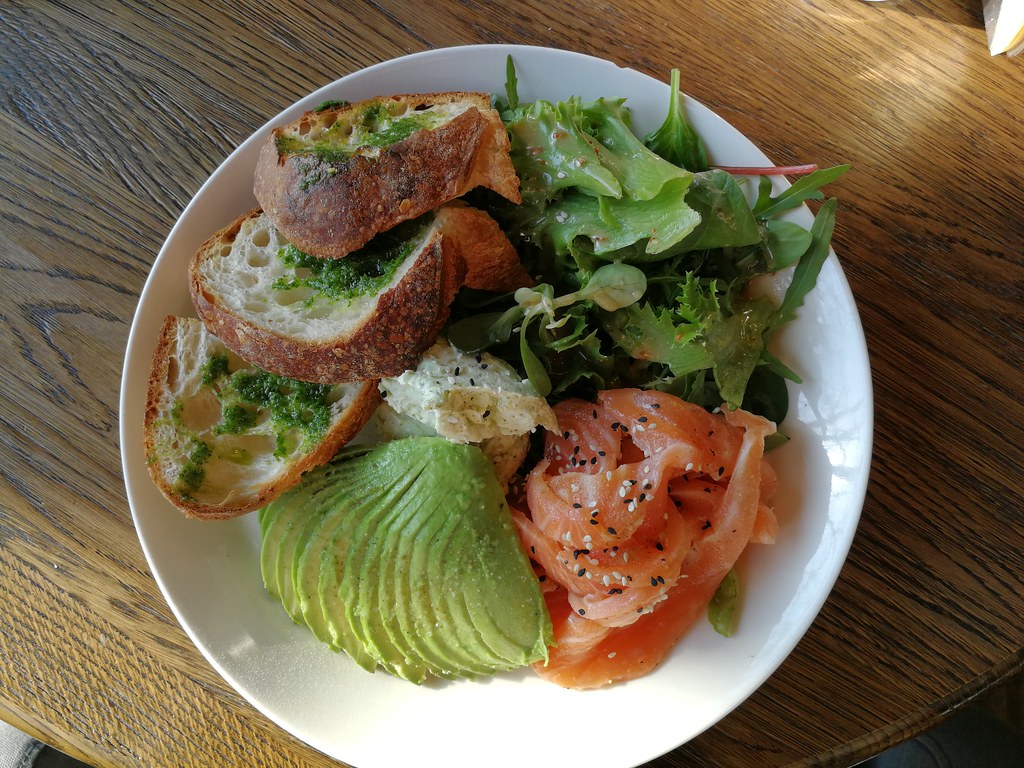
After breakfast, head back to Freedom Square in the southern part of the Old Town to begin your self-guided walking tour.
I followed the one in the Lonely Planet Estonia guidebook which introduces you to all the best bits of the upper and lower sections of Tallinn’s Old Town. Here are a few of the sights you’ll pass on the route (which takes approximately 2-3 hours with stops).
Old Town Walking Tour
1 | Freedom Square
Located just outside the former town gates, Freedom Square is a large paved plaza that’s used for summer concerts. There’s a huge glass cross at the square’s western end, commemorating the Estonian War of Independence.
If you take the stairs to the right of the cross, you’ll head up into the upper section of Tallinn’s Old Town. This area is also known as “Toompea” and was once an entirely separate town where the aristocracy resided.
2 | Statue of Linda
I would’ve completely missed this, had it not been one of the points of interest on Lonely Planet’s walking tour of Tallinn.
According to legend, Toompea is the burial mound of King Kalev – the very first leader of Estonia – and was built by his widow, Linda. It seems fitting then, that a statue of Linda has been erected up here – surrounded by 250-year-old linden trees.
3 | Pikk Hermann and the Estonian Parliament Building
Dating from 1371, Pikk Hermann is the best preserved of the three surviving towers of Toompea Castle. The castle is barely recognisable now though; in the 18th century it was converted into a pastel pink Baroque palace, at the hands of Russian empress, Catherine the Great.
It now houses the Estonian parliament.

4 | Alexander Nevsky Cathedral
Lavish and very Russian-looking, the onion-domed Alexander Nevsky Cathedral was built between 1894 and 1900, when the city was part of the Russian empire.
No photos are permitted inside, but its interior is equally as grand.
5 | St. Mary’s Cathedral
If you continue uphill from Alexander Nevsky Cathedral, you’ll come to St. Mary’s Cathedral on your right.
Originally established by the Danes in the 13th century, St. Mary’s Cathedral is the oldest church in Tallinn and the only one in Toompea that survived a 17th century fire.
6 | Patkul and Court Square Lookouts
Patkul Lookout is accessible either via a cobbled lane that leads off Rahukohtu, or via 157 steps that connect Toompea with Old Town Tallinn’s lower town. If there are no cranes on the horizon, you’ll be treated to a picture-perfect view over the rooftops of Tallinn’s lower town and out towards the sea.
You’ll find Court Square Lookout a little further along the cobbled lane, where its viewing platform offers a slightly different perspective of the lower town.
7 | Danish King’s Garden
Again, I probably would’ve missed this little opening in the Old Town walls that leads to the Danish King’s Garden, had it not been for the fact that I was following Lonely Planet’s walking tour of Tallinn.
There are so many of these hidden little courtyards around, and it’s one of the things I loved most about exploring Tallinn’s Old Town.
When I visited there was a gentleman playing guitar in the corner, and I’ve heard that in the Summer artists set up their easels here too, to capture the Old Town vistas.
You’ll also find sculptures of three monks in the garden, which I found kinda cool but a little creepy – especially as the absence of faces makes them reminiscent of the grim reaper and, in light of this, the irony of the words “breathe, baby” next to one of them sends little shivers down your spine.
8 | Short Leg Gate Tower
Continuing along the creepy theme, the Short Leg Gate Tower is thought to be the most haunted building in Tallinn.
People have reported seeing apparitions of a crucified monk and a black dog with burning eyes. I didn’t return at night to verify either of these stories.
9 | Long Leg Gate Tower
If you turn right as you exit the Short Leg Gate Tower, you’ll find yourself on the long sloping lane that is Pikk Jalg, leading down to the Long Leg Gate Tower (constructed 1380), which marks the entrance to the lower town.

10 | Lower Town Walls (best preserved section)
You’ll walk along Nunne and on to Väilke-Kloostri in the direction of Suur-Kloostri, where you’ll find the best preserved section of the lower town walls.
This was one of my favourite parts of the Old Town and if you pass through the gate and turn right, you’ll get an amazing view of the battlements that once encircled the whole town.
Of the original 45 towers, 26 remain today.
11 | Great Coast Gate
Built as a defence on the seaward side of the medieval walled city, Tallinn’s Great Coast Gate is one of the most impressive of the remaining medieval gates
12 | Former KGB Headquarters
Almost opposite where I was staying on Pikk Street, the former KGB Headquaters are located at number 59. Suspected enemies of the state were imprisoned and interrogated in the cellars here before either being shot or sent to labour camps in Siberia.
The building now houses a museum where you can visit the old prison cells, and learn about Estonia’s tortured past.
13 | Saiakang (White Bread Passage)
Named after a historic bakery that was once located here, White Bread Passage is a narrow alleyway that links Pikk to the Town Hall Square. It’s lined with cafés and gift shops.
14 | Raekoja Plats (Town Hall Square)
Markets began popping up here since the 11th century and ever since then its been the central hub of activity in the Old Town.
In the Summer it’s lovely place to grab a seat at one of the cafés whose tables spill out into the centre of the action, and in the Winter a huge pine tree stands in the middle of the square, to mark the advent of Christmas. It’s a tradition that began as far back as 1441, when it was the world’s first publicly displayed Christmas tree.
On the edge of the square you’ll find the Town Council Pharmacy, which has been dispensing medicines since 1422.
15 | St. Catherine’s Passage
Hidden away off busy, restaurant-lined street, Vene, St. Catherines Passage was another of my favourite spots in Tallinn’s Old Town. I actually initially discovered it during my late afternoon wander on the first day I arrived in the city. If you’re a photographer, you’ll want to head here at a similar time of day: the lighting is beautiful.
The passageway is lined with artisan studios and old stone tombstones from the nearby Dominican Monastery.
The tour finishes at Viru Gates, but you’ll need to nip across to the western edge of the lower town in order to reach the next item on the agenda. If you’re hungry, head to Must Puudel for lunch on route. There are all sorts of inventive soups, salads and mains on the menu (I ordered oven baked avocado and goats cheese with figs, thyme and beet hummus and roasted pine nut seeds) and they cater for vegans, as well as gluten and lactose-free diets. There’s a cosy little courtyard out back.
I’d also advise popping into Rataskaevu 16 to book a table for dinner the following evening. This was my absolute favourite restaurant in Tallinn. It offers the perfect combination of delicious food, amazing staff, and a cosy, relaxed ambience.
Telliskivi
Telliskivi – whose full name is “Telliskivi Creative City” is, as its name suggests, the city’s creative hub. It’s located in a former industrial complex between Tallinn’s Old Town and the Kalamaja neighbourhood (which is next up on the agenda after Telliskivi).
In 2009, the creators of Telliskivi Creative City told a journalist:
“We’re building a self-sufficient city. One made of people who, while different, share a vision of what a friendly, open, and creative community should be like. Not just in these 10 buildings, but across the country.”
From having just one tenant in 2009, the city has expanded to encompass 250 companies, employing approximately 1500 members of staff. You’ll find art galleries and studios, indie shops, quirky cafes, hipster coffee shops and trendy restaurants. There is also a calendar of around 600 concerts and other cultural events each year.
If you’re into street art, you’ll find some pretty cool pieces here, too.
Have a wander, snap a few photographs, and book a table at either F-Hoone or Moon for dinner later that day. You’ll be coming back here once you’ve explored Kalamaja.
Kalamaja
Spreading out immediately north of Telliskivi is the peaceful residential neighbourhood of Kalamaja. Kalamaja – meaning “fish house” – began life as the city’s fishing harbour in the 14th century.
When Tallinn became connected to St. Petersburg by railroad in 1870, numerous factories started popping up in the area and as a consequence the wooden houses that Kalamaja is now famous for were built to accommodate the factory workers. Around 500 of these houses exist today, dating from the late 19th and early 20th centuries.
There are a few shops, cafes and restaurants scattered around Kalamaja (and you’ll also find the Maritime Museum in this area), but most of the joy of exploring comes from meandering through its network of pretty streets, and photographing these colourful wooden houses.
It will probably be early evening by the time you’re done exploring here, so return to Telliskivi Creative City and to the restaurant that you booked for dinner. If you chose F-Hoone, I can also recommend sampling the local Baltic porter, Pöhjala.
If you’re a fan of craft ales, pop into SIP on your way back to the Old Town. You’ll be spoilt for choice!
Day Two | Kadriorg and Rotermanni
You can have a bit more of a leisurely start today as there’s not quite as much on the agenda. Day two will see you heading east of Tallinn’s Old Town, towards the Kadriorg neighbourhood. Kadriorg is a 2.5 kilometre walk from the Old Town, but you can break up the walk with breakfast at NOP. Alternatively the number 1 tram heads to Kadriorg; you’ll just need to jump off on route by the modern, distinctive-looking Estonian Methodist Church.
NOP is an acronym for Neighbourhood Organic Place, because its owners wanted to create an establishment where that locals could meet, new friends are made, and everyone feels welcomed and included. They focus on local organic produce, some of which they also sell in their attached shop.
Once you’re sufficiently fed and watered, continue on to Kadriorg.
Kadriorg
When Russian tsar Peter the Great conquered the Baltics in the early 1700s, he established an estate and public park on this spot, which he named after his wife, Catherine the First. “Kadriorg” means “Catherine’s Valley” in Estonian.
The park is still the neighbourhood’s main draw, which is why you’ll find a lot of Kadriorg’s attractions located within this vast expanse of greenery dotted with tall trees, ponds and fountains.
Among the attractions located within Kadriorg Park are Kadriorg Palace, Peter the Great House Museum, and my favourite – KUMU Art Museum.
Opened in 2006, KUMU Art Museum is, in my opinion, the star attraction of Kadriorg Park. It displays Estonian-created works from the 18th through to the 21st century, and there’s also a huge section dedicated to Soviet-era fashion.
Once you’ve exhausted your time in Kadriorg Park, head back in the direction of Tallinn’s Old Town. But around half a kilometre before you get there, take a turning off towards the Rotermanni Quarter.
Rotermanni
If you put “Brew Dog Rotermanni” (the only reason I actually ended up finding this interesting development) into Google Maps, it will take you right into the heart of the Rotermanni Quarter.
Like Telliskivi, Rotermanni was once nothing more than a series of dilapidated old factory buildings, from the 19th and early 20th centuries. It’s now been converted into a bustling commercial and cultural centre, and is home to a number of shops and restaurants.
I arrived a little early to sample Brew Dog’s innovative range of craft beers (you’ll need to get there after 5pm for that), but I found an amazing coffee shop called Røst where you can get bottomless coffees (unlimited free top-ups) for under €3 and, if you’re hungry, one of their tasty baked delights to accompany it.
Old Town
When you’ve had a good look around Rotermanni, head back to the Old Town and tick off any of the sights you didn’t cover in yesterday’s walking tour. For me, there were four I had on my list.
1 | Photography Museum
Being an avid photographer, this one was definitely on my radar. It’s housed inside a 14th century building that used to be the city’s prison. The museum documents the 150-year-old history of photography in Tallinn and is spread over several floors, with winding staircases and narrow passageways linking each of its rooms. It’s not a huge museum but I did find it really interesting and well worth the €4 entrance fee
2 | Climbing St. Olaf’s Church Tower
As you’ve probably already gathered, Tallinn has lots of towers, many with viewing platforms open to visitors. The Town Hall tower doesn’t open until June, but the one I was interested in climbing was St. Olaf’s Church tower.

Between 1549 and 1625 St. Olaf’s Church was believed to be the tallest building in the world, with a spire soaring to 159 metres (according to some sources – although many historians dispute this).
However, the tower was struck by lightning around 10 times, three of which led to extensive fires. As a result, the church had to be rebuilt and today stands just shy of 124 metres tall.
It’s still Tallinn’s tallest building and there’s an unwritten rule here that no new structure can be any taller – hence why there are no skyscrapers in the city.
And I must admit, the views from the top are pretty impressive.

3 | Master’s Courtyard
Aside from St. Catherine’s Passage, the Master’s Courtyard is where you’ll want to head if you’re looking to purchase unique, handcrafted products made here in Tallinn. You’ll find potters, jewellers, glass blowers and wood turners, as well as those producing leather goods, knitted items and natural skincare solutions.
All the shops are located in buildings surrounding a large sunny courtyard where you can sit and enjoy a coffee from the attached cafe. Don’t order food though because, trust me, you’ll want to save yourself for your meal at Rataskaevu 16 later.
4 | Dinner at Rataskaevu 16
I’ve already recommended Rataskaevu 16 earlier in this post, so I won’t say much more here, but take it from me, this place 100% deserves its position as the best-rated restaurant in Tallinn on Trip Advisor (correct May 2019).
It is honestly one of the best dining experiences I’ve ever had. It’s just a shame I didn’t have anyone to share it with (one of the drawbacks of travelling solo).
Where to stay in Tallinn
There are loads of accommodation options to chose from in Tallinn – hostels, hotels and apartments. I chose to stay at Tallinn City Apartments due to their central location (I stayed in the one bedroom apartment at Pikk 40), fantastic customer reviews and great value for money.
And I absolutely loved my choice! The apartment was huge, clean and quiet, and a wonderful, comfortable place to return to at the end of a busy day of sightseeing.
Have I missed anything I shouldn’t have? If you’ve travelled to Tallinn recently and have any other sights or activities (or restaurants) you’d add to my itinerary, let me know in the comments below.
If you like this article, please share it on social media using the share buttons at the top of the post. And if you’d like to save it for reading later, why not pin to one of your Pinterest boards? Alternatively you can follow along on Facebook, Twitter, or Google+ or you can look me up on Instagram or Pinterest too!




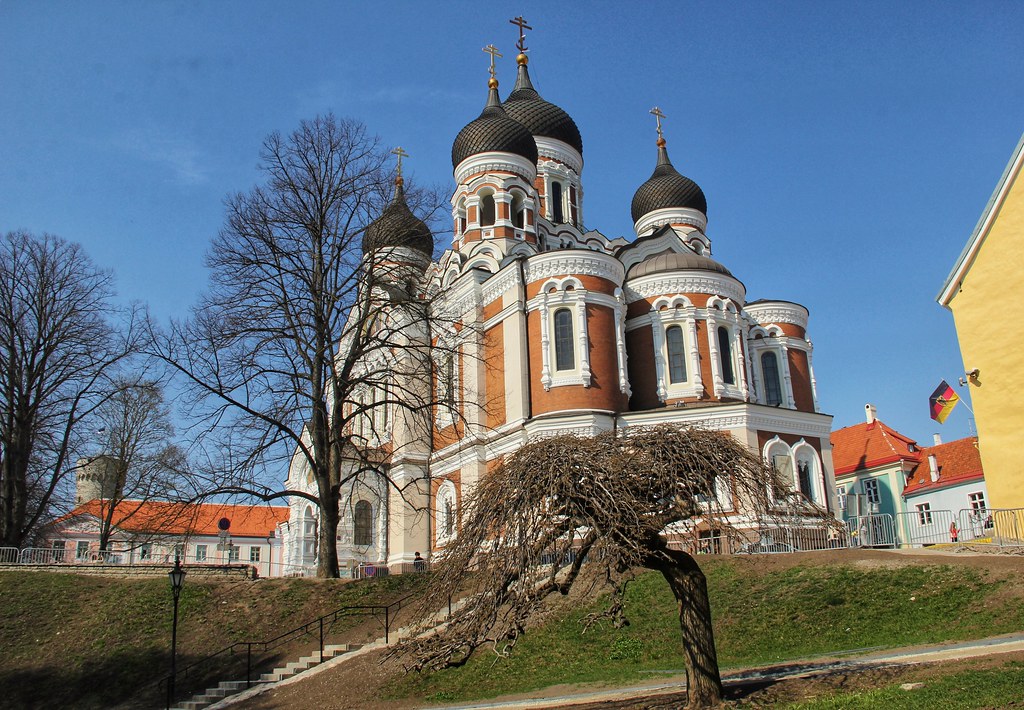











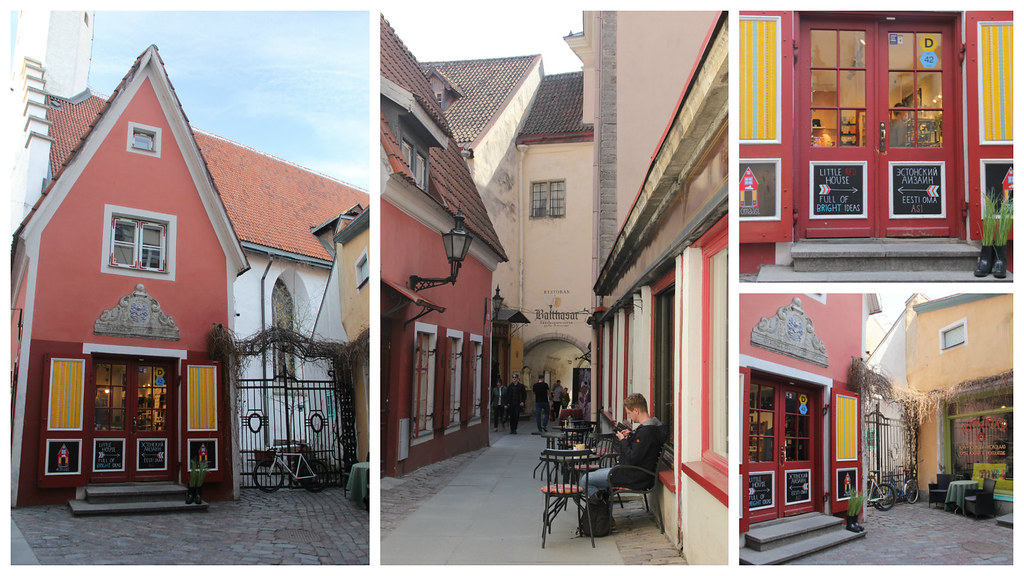










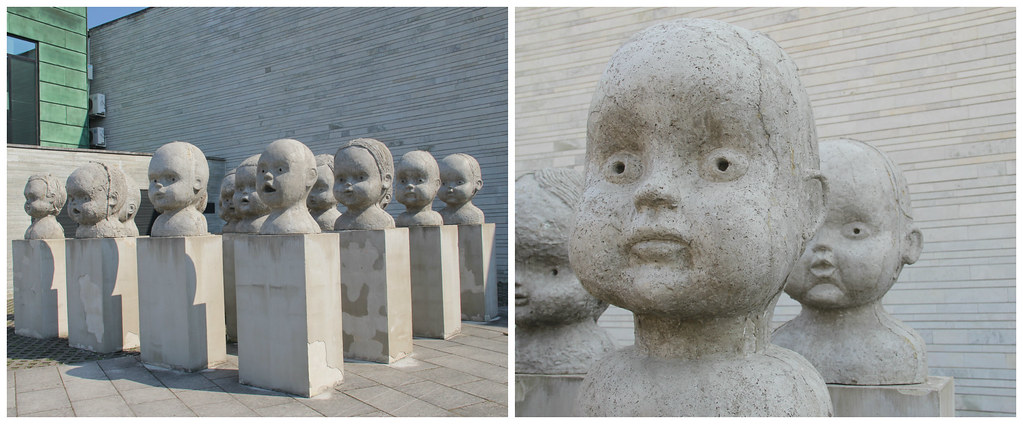


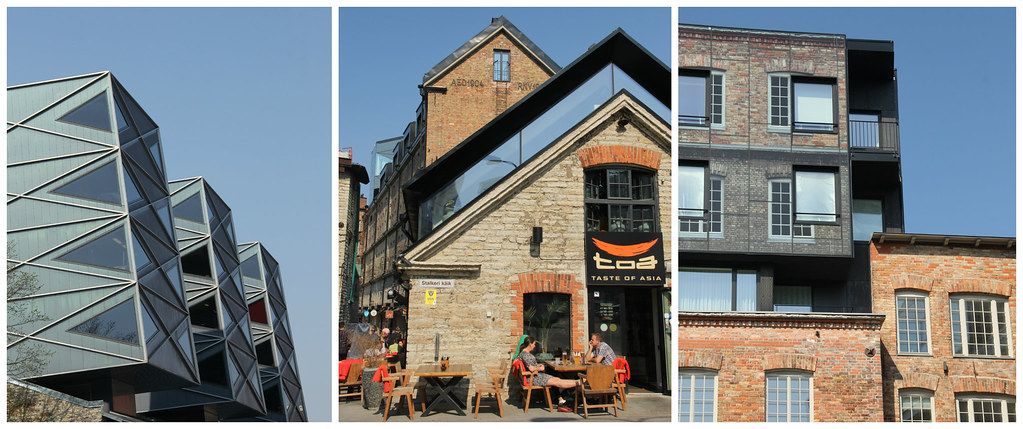






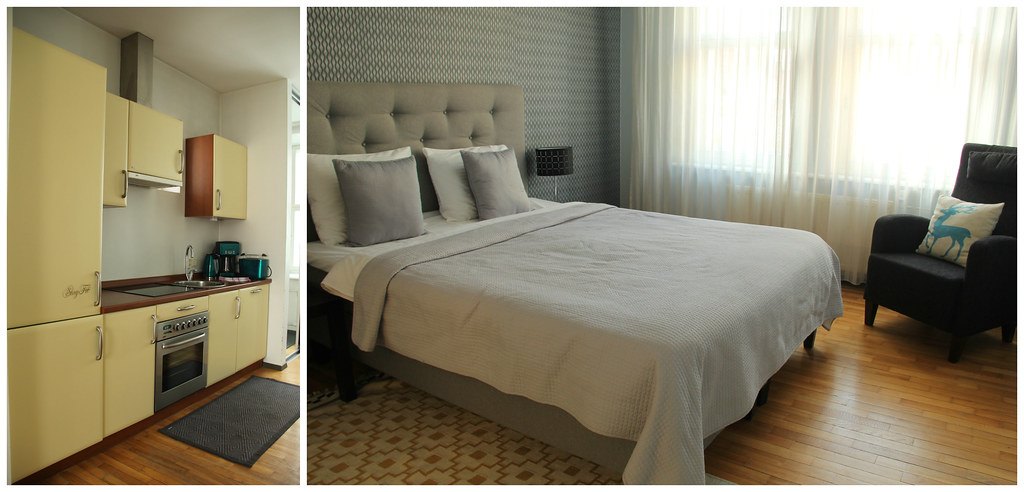






No Comments